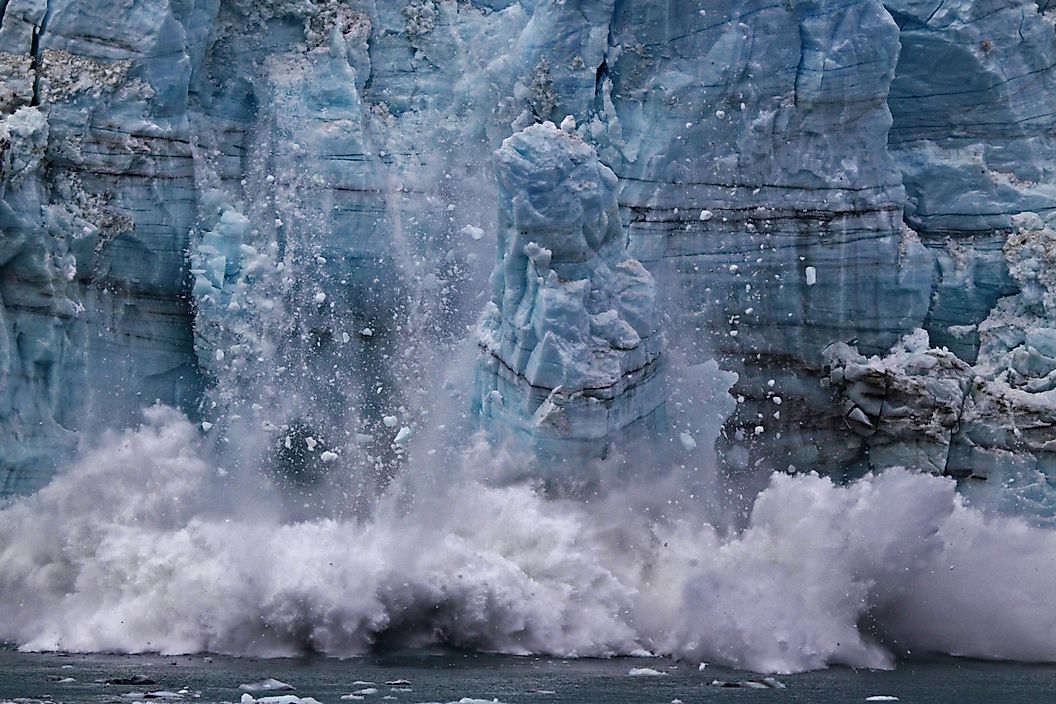How melting glaciers affecting us?
Why are glaciers important?

Ice acts as a protective layer over the Earth and its oceans. These dazzling white spots reflect excess heat back into space, keeping the earth cool. In theory, the Arctic stays colder than the equator because more heat from the sun is reflected off the ice and back into space. Glaciers around the world can be hundreds or thousands of years old, providing a scientific record of how climate has evolved over time. Their research provides crucial information regarding the extent to which the world is quickly warming. They give scientists a record of how the climate has evolved throughout time. Glacial ice currently covers around 10% of the Earth's land surface. Almost 90% is in Antarctica, with the remaining 10% in Greenland's ice cover. Rapid glacial melt in Antarctica and Greenland also has an impact on ocean currents, as vast amounts of extremely cold glacial melt water enter warmer ocean waters, slowing currents. Sea levels will continue to increase as land-based ice melts.
Why do glaciers melt?

When experts talk about climate change they often mention that the glaciers are shrinking. Most glaciers, ice caps, and ice sheets on our planet are retreating right now because the planet is getting warmer. The warmer it is, and the longer it is warmer, the more ice that melts. This also means that places that typically get a lot of snow are becoming a little less snowy and a little more rainy. Remember, glaciers need snow to grow in the winters - even to just stay where they are. So with less snow and more rain, along with warmer temperatures in the summer, glaciers will keep shrinking. Currently, the main cause of melting glaciers is the actions of humans. As the Earth's temperature is rising mostly due to mankind's actions,this leads to glaciers to melting faster than before. It has grown so terrible that glaciers are almost practically have gone extinct. A significant reason of this is the substances we've been placing into the environment, such as CO2. Factories, transport vehicles, cutting down many trees, and the extreme use of fossil fuels all play a role in this. Molecules in these gases trap heat from the sun, warming the Earth causing global warming which leads to melting glaciers.
Effects of melting glaciers
-
Sea level riseGlacial melting has contributed to raising sea levels by 2.7 centimeters since 1961. Furthermore, the world's glaciers contain enough ice about 170,000 cubic kilometres to raise sea levels by nearly half a metre. (Iberdrola, 2022)
-
Impact on the climateGlacial thawing at the poles is slowing the oceanic currents, a phenomenon related to altering the global climate and a succession of increasingly extreme weather events throughout the globe.(Iberdrola, 2022)Disappearance of speciesGlacial melting will also cause the extinction of numerous species, as glaciers are the natural habitat of a number of animals, both terrestrial and aquatic.(Iberdrola, 2022)Less Fresh WaterThe disappearance of glaciers also means less water for consumption by the population, a lower hydroelectric energy generation capacity, and less water available for irrigation.(Iberdrola, 2022)
Solutions to reducing melting glaciers
-
Stop climate changeIn order to curtail climate change and save the glaciers, it is indispensable that global CO2 emissions be reduced by 45 % over the next decade, and that they fall to zero after 2050.(Iberdrola, 2022)
-
Slow down their erosionThe scientific journal Nature suggested building a 100-metre-long dam in front of the Jakobshavn glacier (Greenland), the worst affected by Arctic melting, to contain its erosion.(Iberdrola, 2022)Combine artificial icebergsIndonesian architect Faris Rajak Kotahatuhaha won an award for his project Refreeze the Arctic, which consists of collecting water from melted glaciers, desalinating it and refreezing it to create large hexagonal ice blocks. Thanks to their shape, these icebergs could then be combined to create frozen masses.(Iberdrola, 2022)Increase their thicknessThe University of Arizona proposed a seemingly simple solution: manufacture more ice. Their proposal consists of collecting ice from below the glacier through pumps driven by wind power to spread it over the upper ice caps, so that it will freeze, thus strengthening the consistency.(Iberdrola, 2022)
Summary
Overall, The melting of the glaciers, a phenomenon that intensified in the 20th century, is leaving our planet iceless. Human activity is the main culprit in the emission of carbon dioxide and other greenhouse gases. The sea level and global stability depend on how these great masses of recrystallized snow evolve.
Information Source : Iberdrola (2022). Glaciers, the great guardians of the stability of the planet’s climate. [online] Iberdrola. Available at: https://www.iberdrola.com/sustainability/melting-glaciers-causes-effects-solutions.